Chayote Bucket Gardening: Ever dreamt of harvesting your own plump, juicy chayotes but thought you didn’t have the space? I get it! Traditional gardens can be demanding, but what if I told you there’s a simple, space-saving solution that brings the bounty of chayote right to your balcony or patio?
Chayote, also known as mirliton or vegetable pear, has a rich history, particularly in Mesoamerica, where it’s been cultivated for centuries. It’s a staple in many cuisines, offering a mild, versatile flavor that’s delicious in everything from stir-fries to soups. But growing it can seem daunting, often requiring sprawling vines and dedicated garden space. That’s where our DIY magic comes in!
In this article, I’m going to share my favorite chayote bucket gardening tricks and hacks. We’ll ditch the traditional garden bed and embrace the ease and portability of bucket gardening. Imagine fresh, homegrown chayotes just steps from your kitchen – no sprawling vines taking over your yard! This method is perfect for apartment dwellers, those with limited space, or anyone looking for a low-maintenance way to enjoy this delicious and nutritious vegetable.
I’ll guide you through every step, from choosing the right bucket and soil to nurturing your chayote vine for a bountiful harvest. So, grab your gardening gloves, and let’s unlock the secrets to successful chayote bucket gardening together! You’ll be amazed at how easy and rewarding it can be.
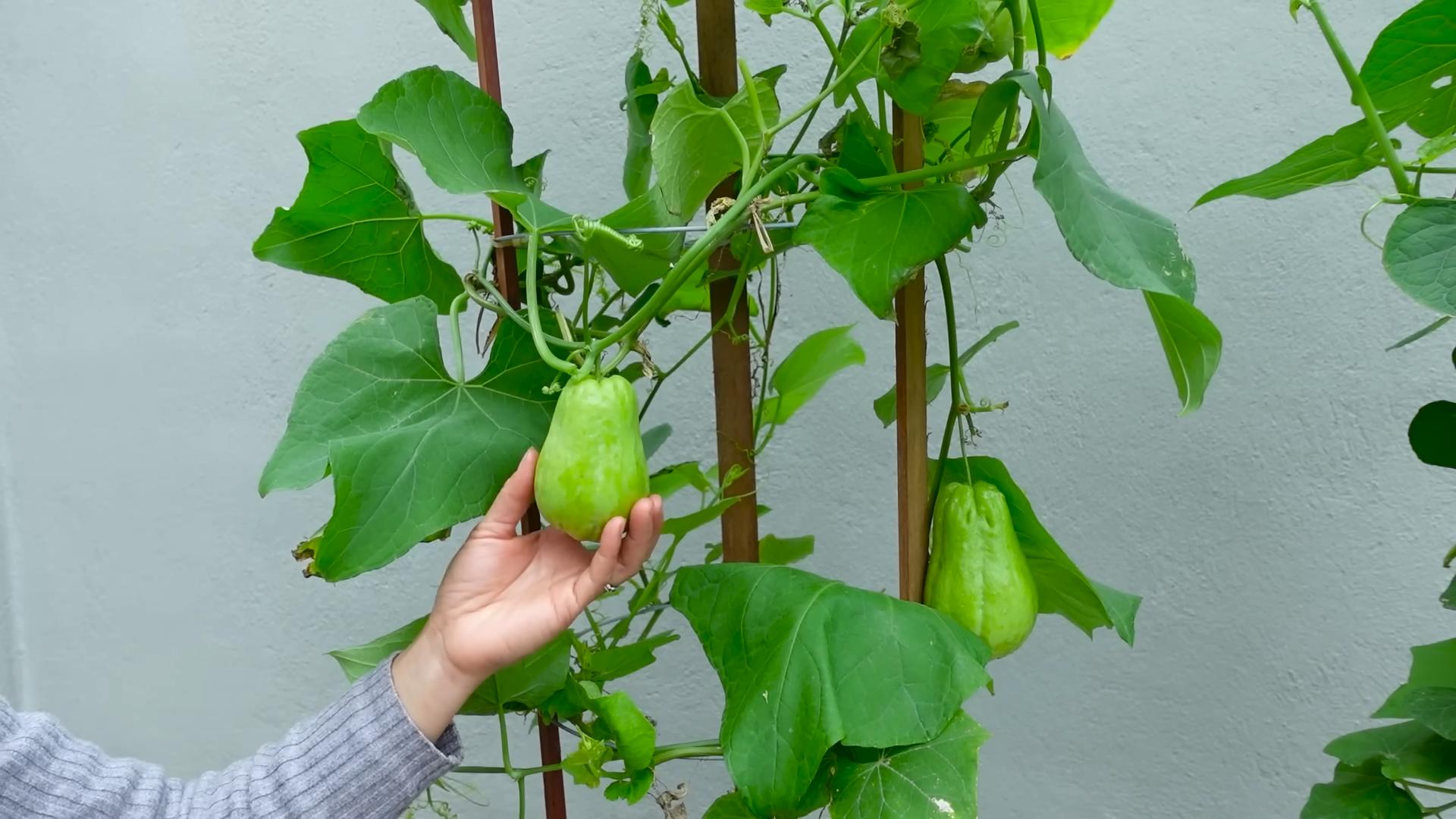
Chayote Bucket Gardening: A Bountiful Harvest in Small Spaces!
Hey there, fellow gardeners! Are you itching to grow something unique and delicious, but short on space? Well, I’ve got just the project for you: Chayote Bucket Gardening! This method lets you cultivate this versatile squash even if you only have a balcony, patio, or small yard. Trust me, it’s easier than you think, and the rewards are totally worth it.
What is Chayote, Anyway?
Before we dive in, let’s talk about chayote (Sechium edule). It’s a type of squash that’s mild in flavor, making it incredibly versatile in the kitchen. You can use it in stir-fries, soups, salads, or even bake it into a pie! Plus, the entire plant is edible – the fruit, leaves, shoots, and even the root tubers. Talk about getting your money’s worth!
Why Bucket Gardening for Chayote?
Chayote vines are vigorous growers, and in the ground, they can take over a large area. Bucket gardening keeps them contained, making them manageable for smaller spaces. It also allows you to control the soil quality and drainage, which is crucial for healthy chayote growth.
Materials You’ll Need
Okay, let’s gather our supplies. Here’s what you’ll need to get started:
* Chayote Fruit: This is your “seed.” Choose a mature fruit that’s starting to sprout. You can usually find these at your local grocery store or farmers market. Look for one that’s firm and free of blemishes.
* Large Buckets: I recommend using 5-gallon buckets or larger. The bigger, the better, as chayote vines need plenty of room for their roots to grow. Make sure the buckets are food-grade if you’re using recycled ones.
* Potting Mix: A well-draining potting mix is essential. I like to use a mix of compost, perlite, and peat moss. You can also buy a pre-made potting mix specifically designed for vegetables.
* Trellis or Support Structure: Chayote vines need something to climb on. You can use a trellis, fence, or even a sturdy tomato cage. The taller, the better, as these vines can grow quite long.
* Drill: For drilling drainage holes in the buckets.
* Watering Can or Hose: For watering your chayote plants.
* Fertilizer: A balanced fertilizer will help your chayote plants thrive. I recommend using a slow-release fertilizer or a liquid fertilizer that you can apply every few weeks.
* Gloves: To protect your hands.
* Optional: Mulch: Mulch helps retain moisture and suppress weeds.
Step-by-Step Guide: Planting Your Chayote
Alright, let’s get our hands dirty! Here’s how to plant your chayote in a bucket:
1. Prepare the Buckets:
* First, drill drainage holes in the bottom of each bucket. I usually drill about 4-5 holes, spaced evenly around the bottom. This is super important to prevent waterlogging, which can rot the chayote fruit.
* If you’re using recycled buckets, give them a good scrub with soap and water to remove any dirt or debris.
2. Prepare the Soil:
* In a large container or wheelbarrow, mix your potting mix ingredients together. I usually use a ratio of 1 part compost, 1 part perlite, and 1 part peat moss.
* Make sure the mixture is well-combined and evenly moist. You don’t want it to be soaking wet, but it shouldn’t be bone dry either.
3. Plant the Chayote Fruit:
* Fill each bucket about two-thirds full with the potting mix.
* Now, here’s the tricky part: planting the chayote fruit. You want to plant it horizontally, with the sprout facing upwards.
* Gently press the fruit into the soil, leaving the top third exposed. Don’t bury it completely!
* Cover the fruit with a thin layer of potting mix, just enough to keep it in place.
4. Water Thoroughly:
* Water the soil gently but thoroughly until water drains out of the drainage holes. This will help settle the soil and ensure that the chayote fruit has enough moisture to start growing.
5. Set Up the Trellis:
* Place the buckets in a sunny location where they’ll receive at least 6-8 hours of sunlight per day.
* Position your trellis or support structure behind the buckets. Make sure it’s sturdy enough to support the weight of the mature chayote vine.
* As the vine starts to grow, gently train it to climb the trellis. You can use plant ties or clips to secure it in place.
Caring for Your Chayote Plants
Now that your chayote plants are in their buckets, it’s time to give them some TLC. Here’s what you need to do to keep them happy and healthy:
1. Watering:
* Water your chayote plants regularly, especially during hot, dry weather. Check the soil moisture by sticking your finger into the soil. If the top inch feels dry, it’s time to water.
* Avoid overwatering, as this can lead to root rot. Make sure the buckets have good drainage.
2. Fertilizing:
* Fertilize your chayote plants every few weeks with a balanced fertilizer. Follow the instructions on the fertilizer package.
* You can also add compost to the soil every few months to provide extra nutrients.
3. Pruning:
* Chayote vines can get quite long, so you may need to prune them to keep them manageable.
* You can prune the vines to encourage branching and more fruit production.
* Remove any dead or yellowing leaves.
4. Pest and Disease Control:
* Keep an eye out for pests and diseases. Common pests that attack chayote plants include aphids, spider mites, and squash bugs.
* You can control pests with insecticidal soap or neem oil.
* Prevent diseases by providing good air circulation and avoiding overwatering.
Harvesting Your Chayote
The best part of growing chayote is, of course, harvesting the fruit! Here’s what you need to know:
1. When to Harvest:
* Chayote fruits are usually ready to harvest about 3-4 months after planting.
* The fruits should be firm and green, with a smooth, glossy skin.
* Harvest the fruits when they’re about 4-6 inches long.
2. How to Harvest:
* Use a sharp knife or pruners to cut the fruit from the vine.
* Leave a short stem attached to the fruit.
3. Storing Chayote:
* Chayote fruits can be stored in the refrigerator for several weeks.
* Wrap them in a plastic bag to prevent them from drying out.
Troubleshooting Tips
Even with the best care, you might encounter some challenges along the way. Here are a few troubleshooting tips to help you out:
* No Fruit Production: If your chayote plant isn’t producing fruit, it could be due to a lack of pollination. Chayote plants have separate male and female flowers, and they need to be pollinated in order to produce fruit. You can hand-pollinate the flowers by transferring pollen from the male flowers to the female flowers with a small brush.
* Yellowing Leaves: Yellowing leaves can be a sign of overwatering, nutrient deficiency, or pest infestation. Check the soil moisture and adjust your watering schedule accordingly. Fertilize your plants regularly with a balanced fertilizer. Inspect the leaves for pests and treat them as needed.
* Slow Growth: Slow growth can be caused by a lack of sunlight, poor soil quality, or cold temperatures. Make sure your chayote plants are getting enough sunlight. Improve the soil quality by adding compost or other organic matter. Protect your plants from cold temperatures by covering them with a blanket or moving them indoors.
Beyond the Fruit: Utilizing the Entire Plant
Remember I mentioned that the entire chayote plant is edible? Don’t let those leaves and shoots go to waste!
* Chayote Leaves: Young chayote leaves can be steamed or sautéed like spinach. They have a mild, slightly nutty flavor.
* Chayote Shoots: The tender shoots of the chayote vine can be stir-fried or added to soups. They have a delicate, asparagus-like flavor.
* Chayote Root Tubers: While it takes a while for the tubers to develop, they are also edible! They can be boiled, baked, or roasted like potatoes.
Final Thoughts
Growing chay
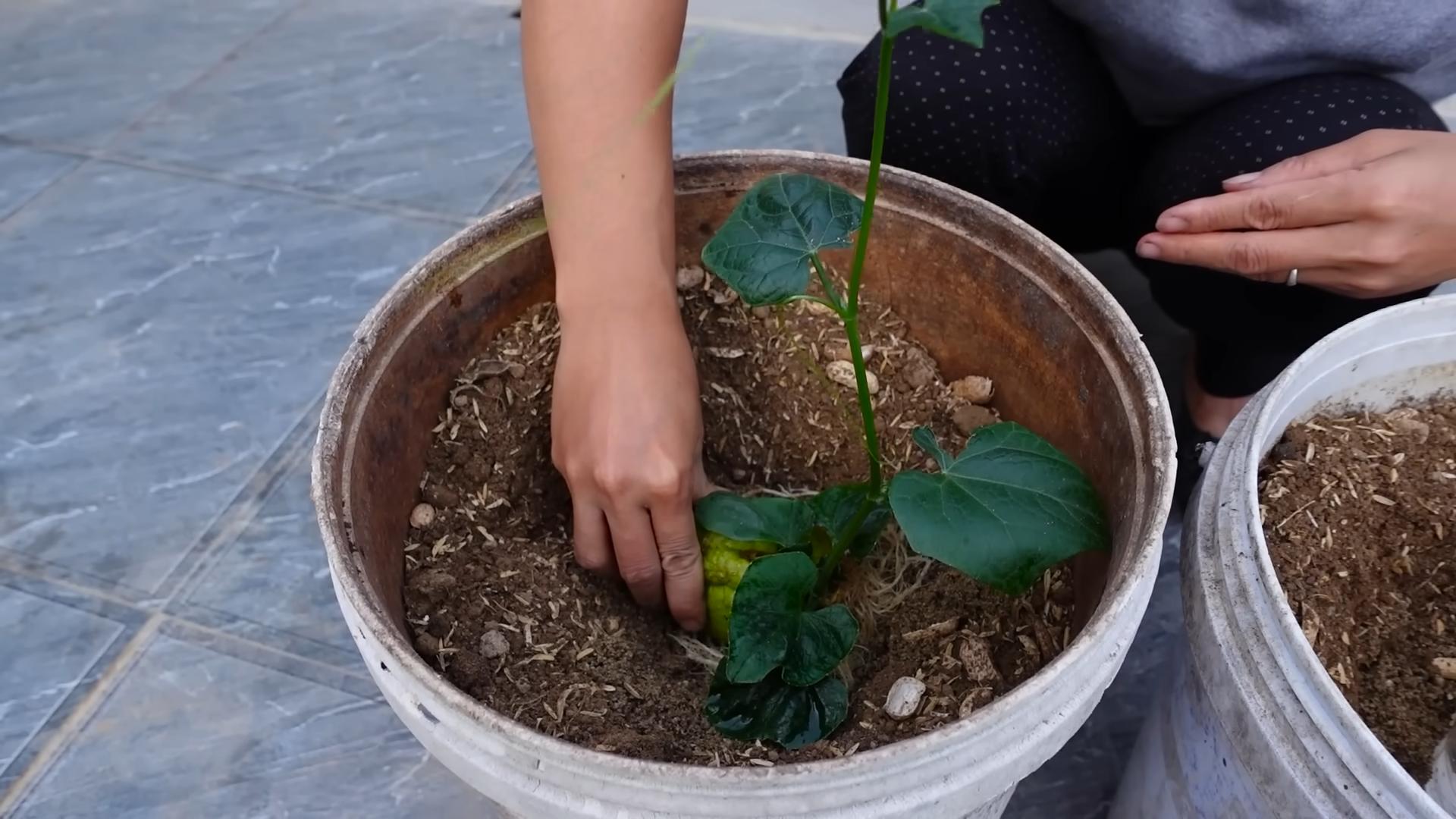
Conclusion
So, there you have it! Chayote bucket gardening: a simple, effective, and incredibly rewarding way to grow your own delicious chayote squash, even if you’re short on space or dealing with less-than-ideal soil conditions. This DIY trick isn’t just about convenience; it’s about unlocking the potential of this versatile vegetable and bringing fresh, homegrown goodness to your table.
Why is this a must-try? Because it democratizes chayote cultivation. No sprawling garden? No problem! A few buckets, some well-draining soil, and a sunny spot are all you need to embark on this exciting gardening adventure. Imagine the satisfaction of harvesting your own crisp, mild chayote, knowing you nurtured it from a tiny sprout to a bountiful vine.
But the beauty of chayote bucket gardening lies in its adaptability. Feel free to experiment with different soil mixes. Adding compost or well-rotted manure will give your plants an extra boost of nutrients. Consider using a trellis or sturdy support system to guide the vigorous vines as they grow. You can even try different varieties of chayote to discover your favorite flavor profile. Some gardeners have successfully grown chayote in self-watering buckets, further simplifying the watering process.
Don’t be afraid to get creative with your setup. Repurposed containers, such as old storage bins or even large plastic drums, can work just as well as traditional buckets. Just ensure they have adequate drainage holes to prevent waterlogging.
Beyond the practical benefits, chayote bucket gardening offers a unique opportunity to connect with nature and learn about the fascinating life cycle of plants. It’s a therapeutic activity that can reduce stress, improve your mood, and provide a sense of accomplishment. Plus, you’ll have a readily available supply of fresh, healthy produce to share with family and friends.
We wholeheartedly encourage you to give this DIY trick a try. It’s a relatively low-cost, low-effort way to experience the joy of growing your own food. And once you taste the difference between store-bought chayote and the ones you’ve nurtured yourself, you’ll be hooked!
But don’t just take our word for it. We want to hear about your experiences! Share your chayote bucket gardening journey with us in the comments below. Tell us about your successes, your challenges, and any tips or tricks you’ve discovered along the way. Let’s build a community of chayote enthusiasts and inspire others to embrace the joys of homegrown produce. Your insights could be invaluable to someone just starting out. So, grab your buckets, get your hands dirty, and let’s grow some chayote!
Frequently Asked Questions (FAQ)
What size bucket is best for chayote bucket gardening?
A: Ideally, you’ll want a bucket that’s at least 5 gallons in size, but 10-gallon buckets are even better. Chayote vines are vigorous growers and need ample space for their root systems to develop. A larger bucket will also provide better water retention, which is crucial during hot weather. If you’re using smaller buckets, you may need to water more frequently.
What kind of soil should I use for chayote bucket gardening?
A: Well-draining soil is essential for healthy chayote growth. A good mix would be equal parts potting soil, compost, and perlite or vermiculite. The potting soil provides nutrients, the compost adds organic matter and improves drainage, and the perlite or vermiculite helps to aerate the soil and prevent compaction. Avoid using heavy clay soil, as it can become waterlogged and suffocate the roots.
How often should I water my chayote plants in buckets?
A: Watering frequency will depend on the weather conditions and the size of your buckets. Generally, you should water deeply whenever the top inch of soil feels dry to the touch. During hot, dry weather, you may need to water daily. Be careful not to overwater, as this can lead to root rot. Ensure your buckets have adequate drainage holes to allow excess water to escape.
How much sunlight do chayote plants need?
A: Chayote plants thrive in full sun, meaning they need at least 6-8 hours of direct sunlight per day. If you live in a particularly hot climate, you may want to provide some afternoon shade to prevent the leaves from scorching. Insufficient sunlight can result in weak growth and reduced fruit production.
Do I need to fertilize my chayote plants in buckets?
A: Yes, regular fertilization is important for healthy chayote growth and abundant fruit production. Use a balanced fertilizer, such as a 10-10-10 or 20-20-20, diluted to half strength. Fertilize every 2-3 weeks during the growing season. You can also supplement with organic fertilizers, such as compost tea or fish emulsion.
How do I support the chayote vines as they grow?
A: Chayote vines are vigorous climbers and need a sturdy support system to grow on. A trellis, fence, or even a strong stake can work well. Train the vines to climb the support structure as they grow, using twine or plant ties to secure them if necessary. Without adequate support, the vines will sprawl on the ground, making them more susceptible to pests and diseases.
When can I harvest chayote squash from my bucket garden?
A: Chayote squash is typically ready to harvest about 4-6 weeks after the flowers are pollinated. The fruits should be firm and green, with a smooth, unblemished skin. You can harvest them at any size, depending on your preference. Smaller fruits tend to be more tender and have a milder flavor.
Are there any pests or diseases that affect chayote plants in buckets?
A: Chayote plants are generally resistant to pests and diseases, but they can be susceptible to aphids, spider mites, and squash bugs. Regularly inspect your plants for signs of infestation and take appropriate action if necessary. You can use insecticidal soap or neem oil to control pests. Good air circulation and proper watering can help prevent fungal diseases.
Can I grow chayote from seed in a bucket?
A: While it’s possible to grow chayote from seed, it’s generally easier and more reliable to start with a whole fruit. Chayote seeds are encased within the fruit and don’t germinate easily on their own. To propagate from a whole fruit, simply place the fruit on its side in a pot of moist soil, leaving the top exposed. Keep the soil consistently moist and wait for the sprout to emerge. Once the sprout has developed a few leaves, you can transplant it into a larger bucket.
Can I grow chayote in a bucket in colder climates?
A: Chayote is a warm-season crop and thrives in temperatures between 65°F and 85°F (18°C and 29°C). If you live in a colder climate, you can still grow chayote in a bucket, but you’ll need to start the plants indoors and provide protection from frost. You can also move the buckets indoors during cold snaps. Keep in mind that chayote plants need a long growing season, so starting them early is crucial in colder climates.
What are some creative ways to use chayote squash from my bucket garden?
A: Chayote squash is incredibly versatile and can be used in a variety of dishes. It can be eaten raw in salads, stir-fried, baked, steamed, or added to soups and stews. It has a mild, slightly sweet flavor that pairs well with both savory and sweet ingredients. You can also pickle chayote or use it to make jams and chutneys. The possibilities are endless!
How do I store chayote squash after harvesting it from my bucket garden?
A: Chayote squash can be stored in the refrigerator for several weeks. Wrap the fruits in a plastic bag or container to prevent them from drying out. You can also freeze chayote squash for longer storage. Simply peel, seed, and dice the squash, then blanch it in boiling water for a few minutes before freezing.

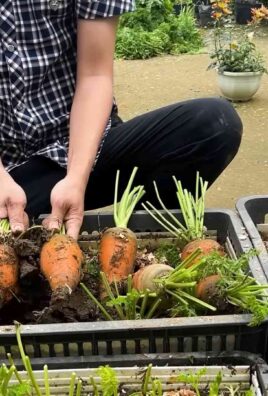
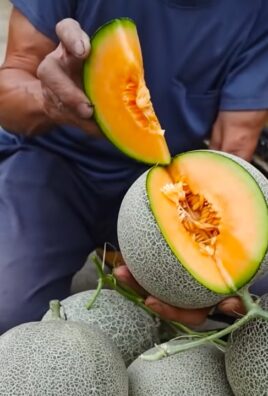
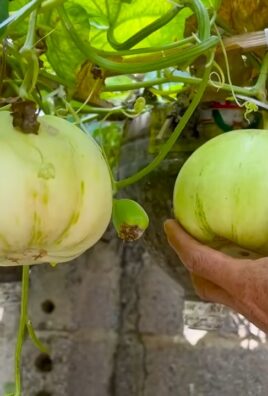
Leave a Comment